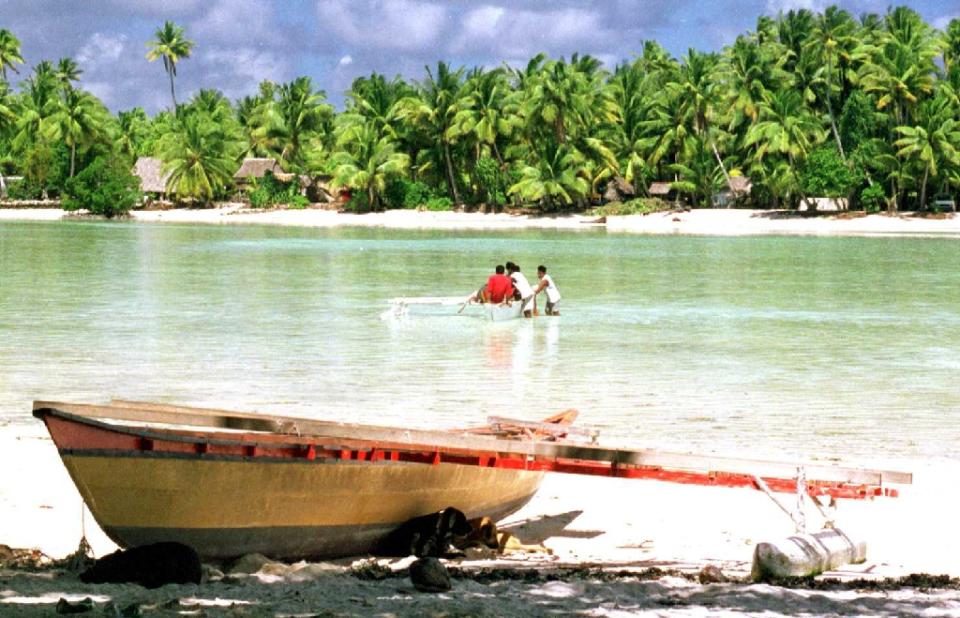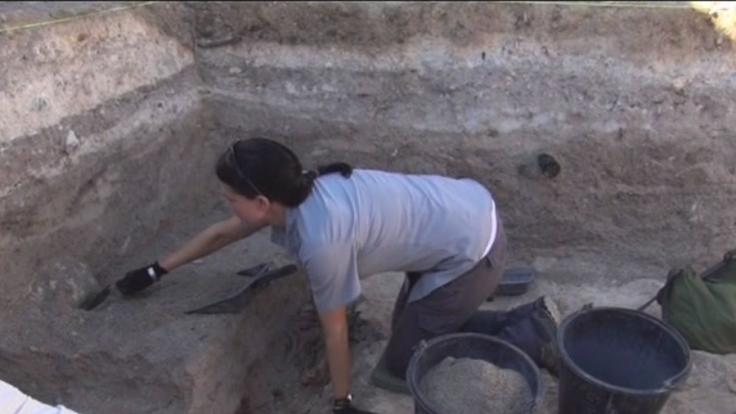You are using an out of date browser. It may not display this or other websites correctly.
You should upgrade or use an alternative browser.
You should upgrade or use an alternative browser.
WW II Historical Thread, Discussion, Pics, Videos
- Thread starter Jeff Head
- Start date
Intrepid
Major
The drawings in the article show a WW II carrier, may be the never build "Graf Zeppelin". There was a evaluation in a wind tunnel shortly before the outbrake of the war.This article doesn't concern a CV type but a LHD or LHA. But it does look interesting.
Miragedriver
Brigadier

German soldiers with a Panzerbüchse 39 “tank hunting rifle model 39” on the Eastern Front. c.1941
Panzerbüchse 39
The Panzerbüchse 39 (PzB 39) was an improvement made by the manufacturer Gustloff Werke on their PzB 38. It also used a vertical breech block mechanism and the same cartridge as the PzB 38. It retained the barrel of the PzB 38 and had an only slightly increased overall length of 162.0 cm (5 ft 3.8 in); weight was reduced to 12.6 kg (28 lb). Performance was basically the same as that of the PzB 38. To increase the practical rate of fire, two cases each containing 10 rounds could be attached to the sides of the weapon near the breech - these were not magazines feeding the weapon, but merely put the cartridges closer to hand for the gunner. 568 PzB 39 were used by the German army in the invasion of Poland; two years later, at the beginning of the war against the USSR, 25,298 PzB 39 were in use by German troops. Total production from March 1940 to November 1941, when production ceased, was 39,232 rifles. The PzB 39 remained in use until 1944, by which time it had become hopelessly inadequate against all but the lightest armored vehicles.
Back to bottling my Grenache
Miragedriver
Brigadier

USAAF Capt. Dewey E. Newhart
"Mud N' Mules" Republic P-47D-15-RE Thunderbolt LH-D s/n 42-76141
350th Fighter Squadron, 353rd Fighter Group, 8th Air Force
Capt. Newhart was killed in action on the 12th of June 1944 during a mission over Northern France.
He was leading the squadron down to strafe an enemy truck convoy near Saint-Saëns, Normandy when he was jumped by 8-10 Bf.109s whilst flying a P-47D LH-U(s/n 42-26402) named "Soubrette", he was hit and radioed that he was attempting to make landfall.
Before he could escape, he was attacked by two more fighters, and was shot down and killed.
The pictured aircraft was re-assigned to Capt. Lonnie M. Davis who renamed it "Arkansas Traveler" but retained the mule artwork out of respect for Newhart.
Back to bottling my Grenache
Miragedriver
Brigadier
Picture of Dresden Before and After the WWII Bombing
You don’t need to be a history hunt to know about the most obscure and surprise bombing of the WWII in the capital of the German state of Saxony-Dresden. The firebombing of Dresden was an American-British attack, and it happened during the last months of the war.
When, on the 13th and 15th February 1945, 722 heavy bombers burned the city to the ground. The bombing killed more than 25,000. Below you can see the before & after pictures.
The View Of Dresden known as (Florence of the North)
Before:

After:

Back to bottling my Grenache
You don’t need to be a history hunt to know about the most obscure and surprise bombing of the WWII in the capital of the German state of Saxony-Dresden. The firebombing of Dresden was an American-British attack, and it happened during the last months of the war.
When, on the 13th and 15th February 1945, 722 heavy bombers burned the city to the ground. The bombing killed more than 25,000. Below you can see the before & after pictures.
The View Of Dresden known as (Florence of the North)
Before:

After:

Back to bottling my Grenache
Equation
Lieutenant General
I wasn't sure where to post this. But it's a good story.




The bodies of 36 US Marines have been found on a remote Pacific island more than 70 years after they died in a bloody World War II battle, a member of the recovery team said.
The remains of the men were discovered after a four-month excavation on Betio Island in Kiribati, director of US charity History Flight Inc., Mark Noah, told Radio New Zealand.
Noah, whose organisation worked with the US Defense Department on the project, said the men were killed during the Battle of Tarawa in 1943.
"(They) had an expectation that if they were to die in the line of duty defending their country they would be brought home... that was a promise made 70 years ago that we felt should be kept," he said late Tuesday.
While the remains have not been formally identified, Noah said they almost certainly include those of Lieutenant Alexander Bonnyman, who posthumously received America's highest military accolade, the Medal of Honor, for conspicuous gallantry.
Bonnyman's citation says he led a series of assaults when Marines stormed the island, finally falling when he attacked a bombproof installation that was hampering the advance.
A statement on History Flight's website said Bonnyman’s daughters had decided to have his remains interred in a family plot in Knoxville, Tennessee, next to his parents, with a public funeral service planned.
Overall, more than 1,000 Americans died at Tarawa, while the entire Japanese garrison of 4,800 was wiped out.
Noah said the remains would be repatriated this month and identified using a combination of dental records and DNA comparison with surviving relatives.
He said the bodies of several hundred American soldiers still lay in makeshift, unrecorded graves where they were buried after the battle.
Noah said efforts would continue to ensure that the bodies were returned home.
"There's a lot of work to be done on the island," he said.
Miragedriver
Brigadier
I wasn't sure where to post this. But it's a good story.


Such a beautiful spot. Hard to believe the horrific battle that took place there 70 years ago. Hope the remains are identified for the families’ sake.
Equation
Lieutenant General
It was basically a very bloody 3 day battle where Japanese and American forces fought. It's like the battle of the Alamo where the Japanese fought until the last man standing with the Americans refusing to give up.Such a beautiful spot. Hard to believe the horrific battle that took place there 70 years ago. Hope the remains are identified for the families’ sake.
Intrepid
Major
I have to correct myself. Never build is wrong. "Graf Zeppelin" never served as a carrier.The drawings in the article show a WW II carrier, may be the never build "Graf Zeppelin". There was a evaluation in a wind tunnel shortly before the outbrake of the war.
